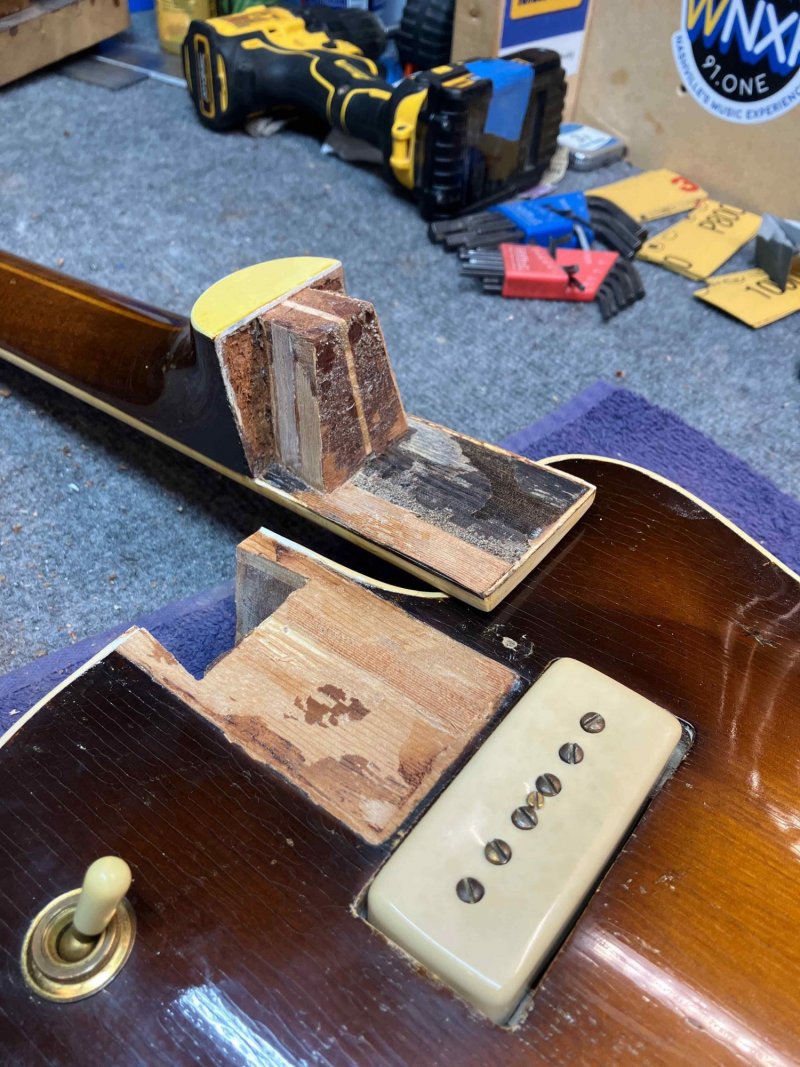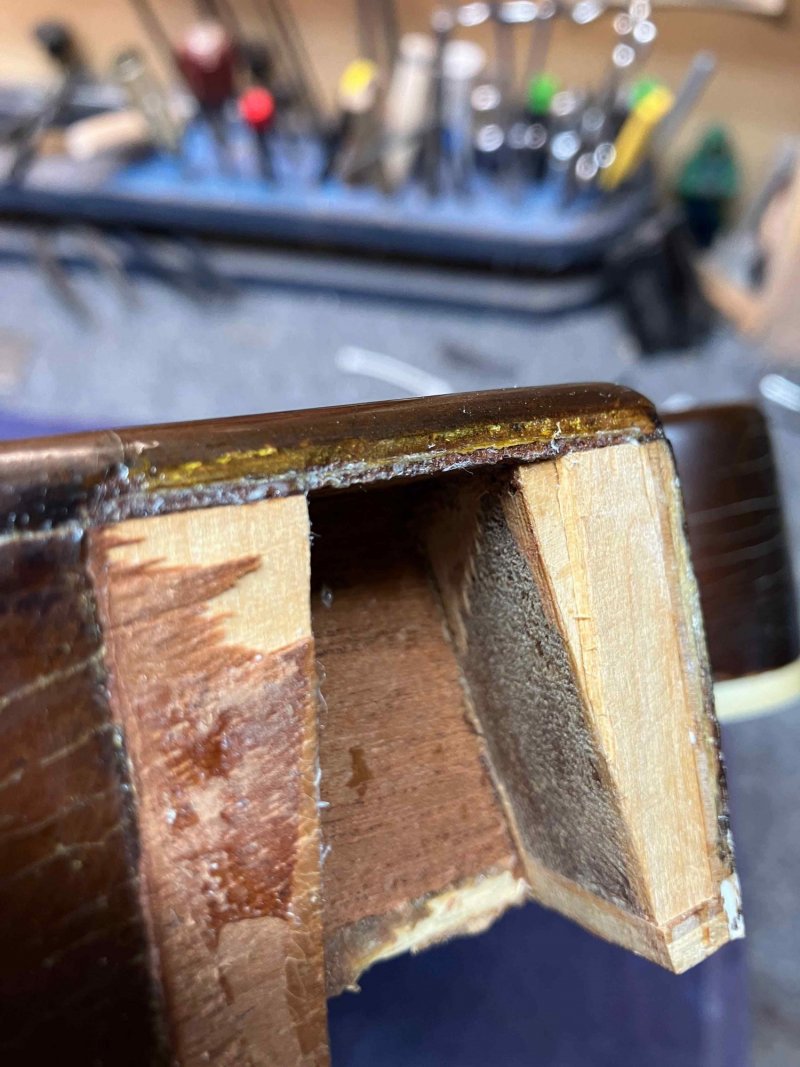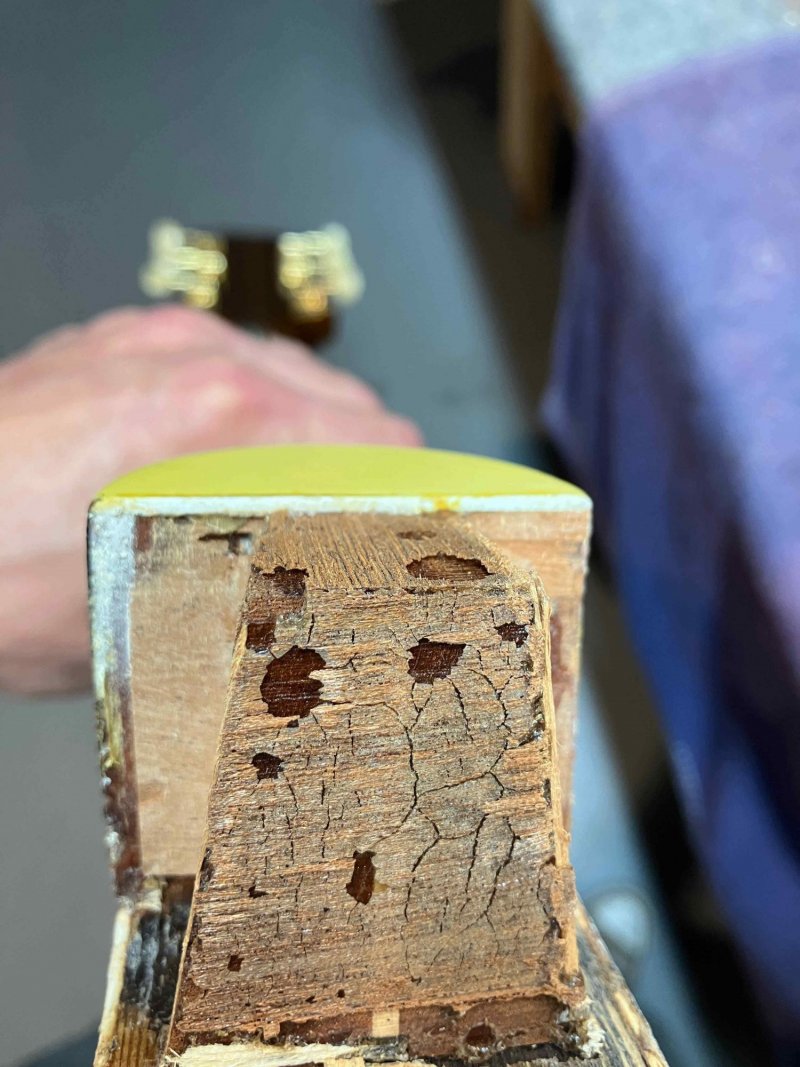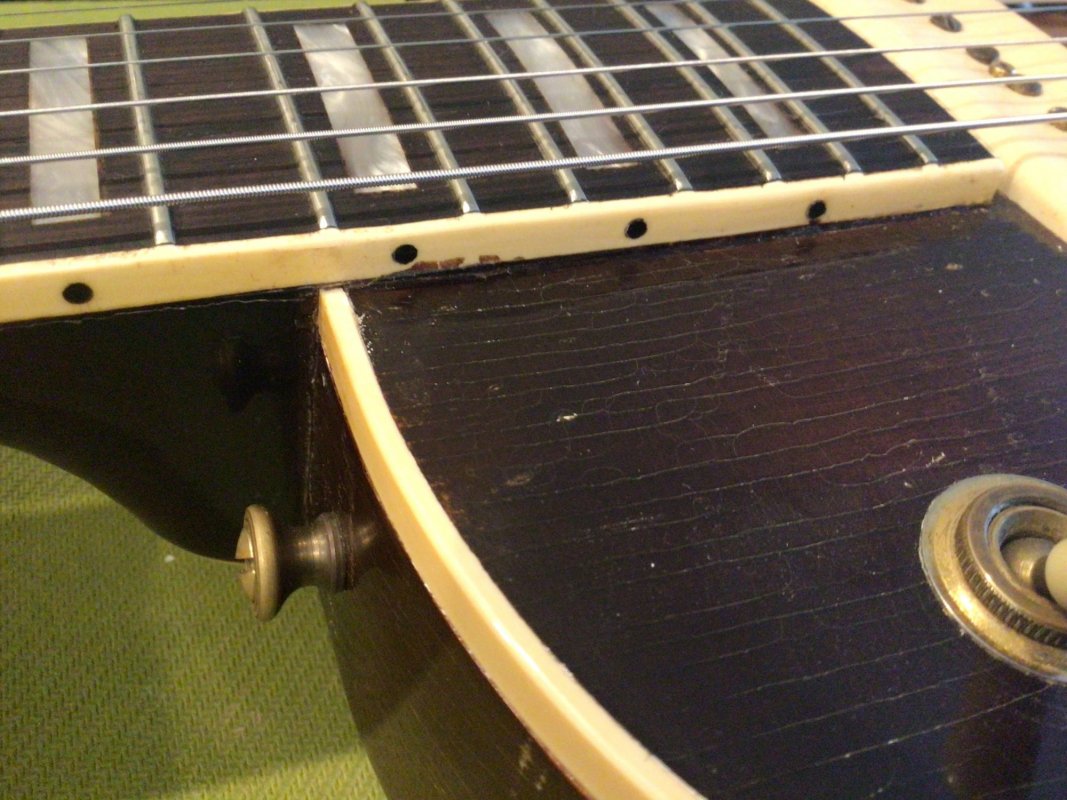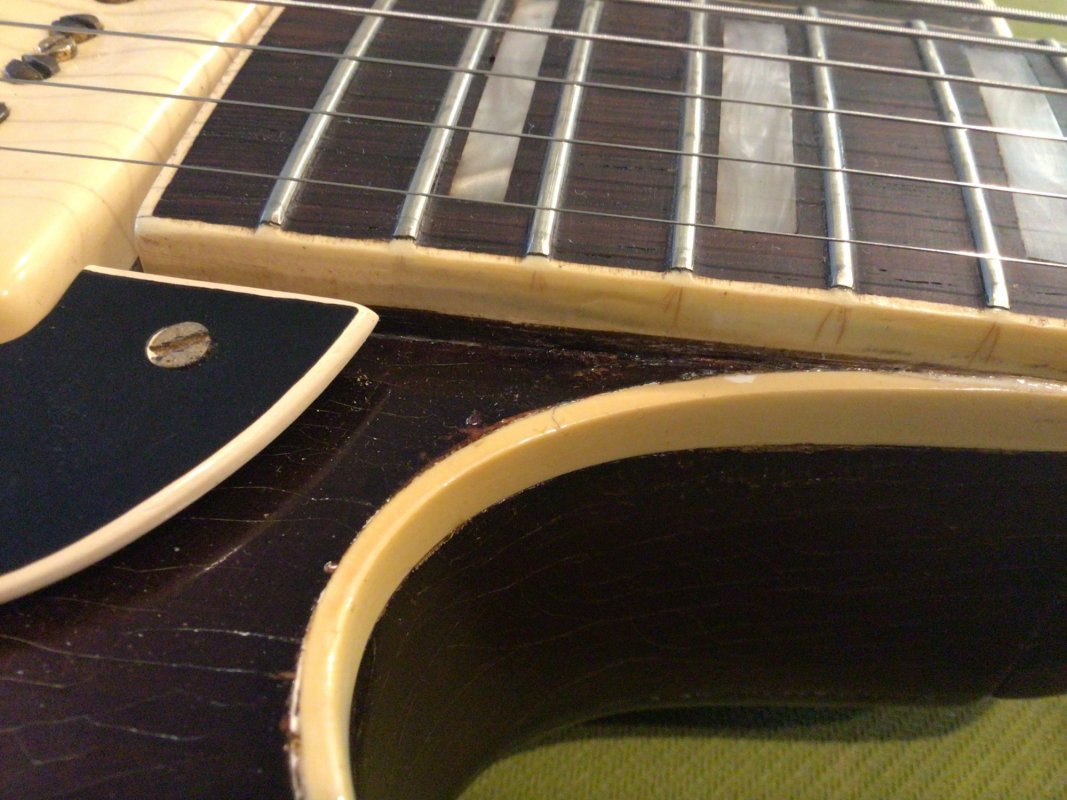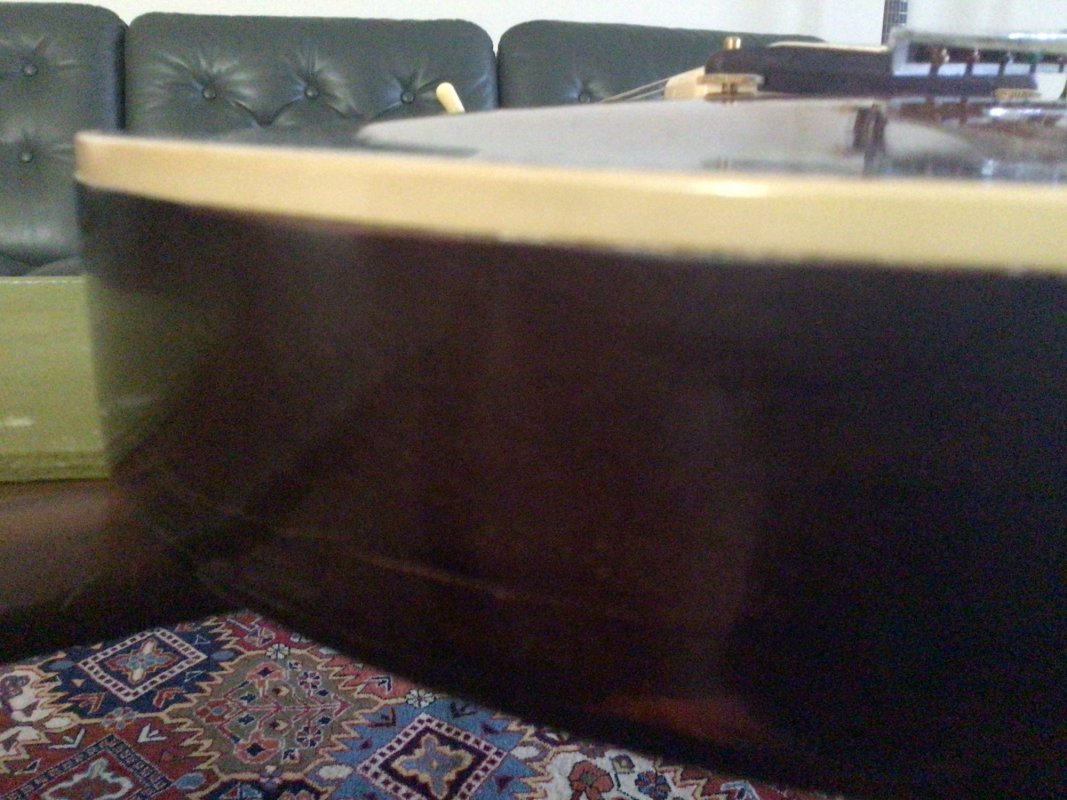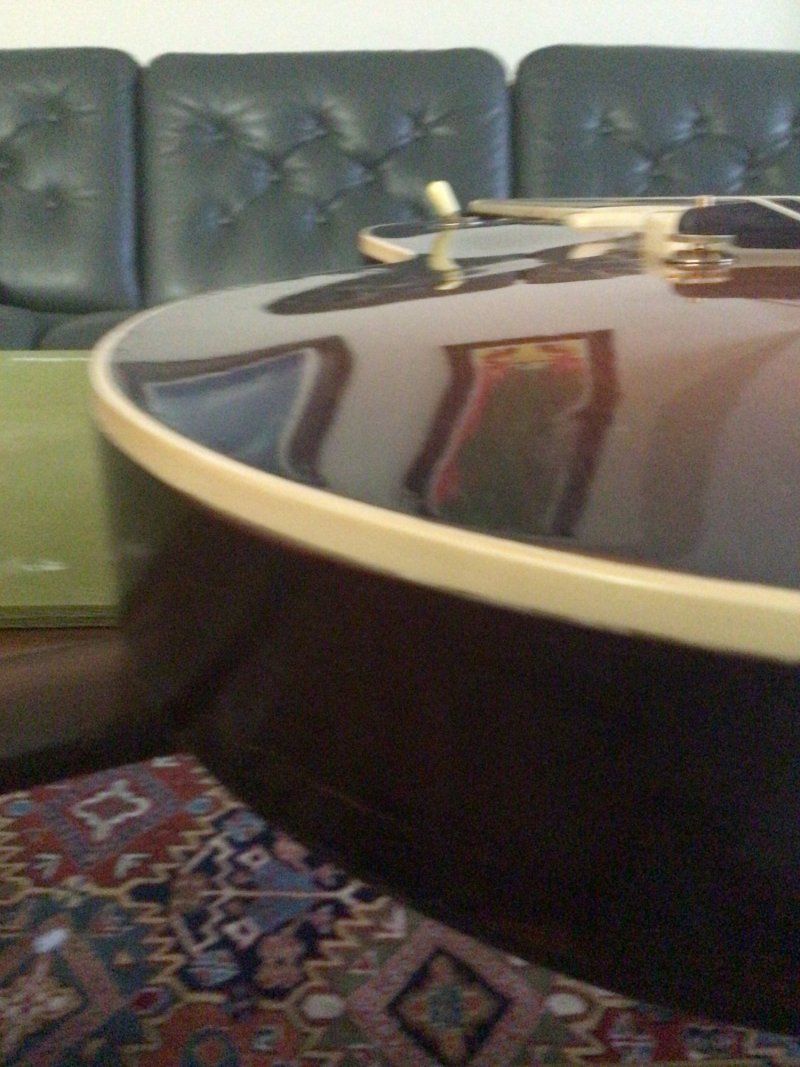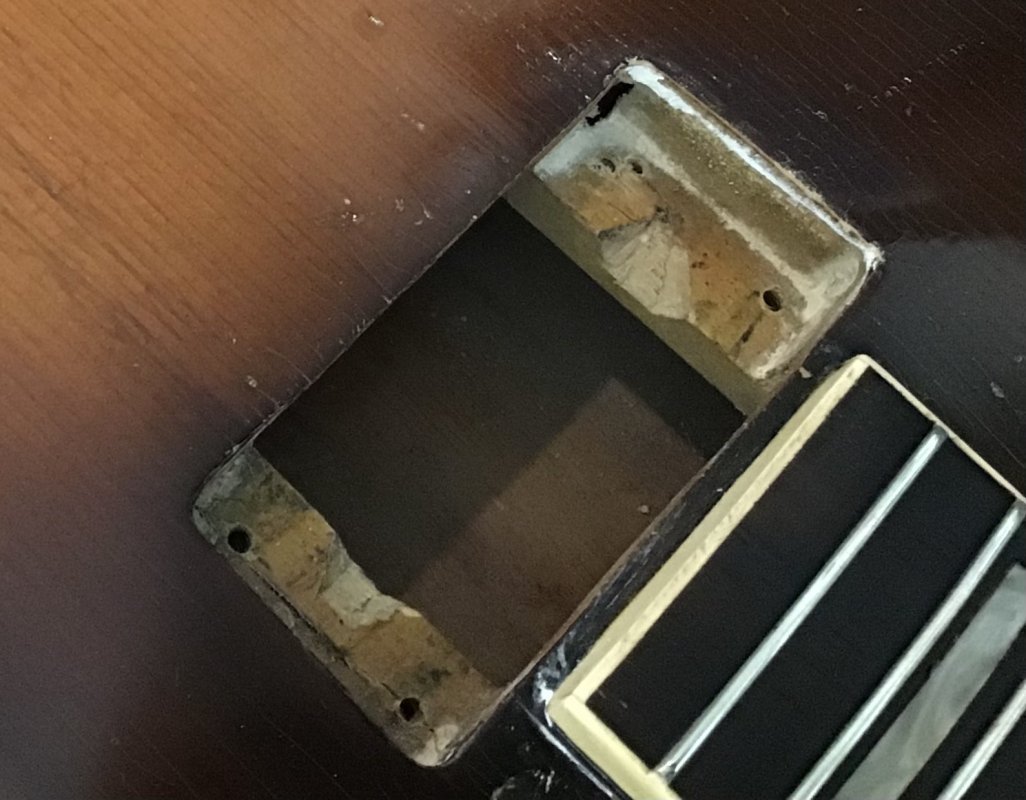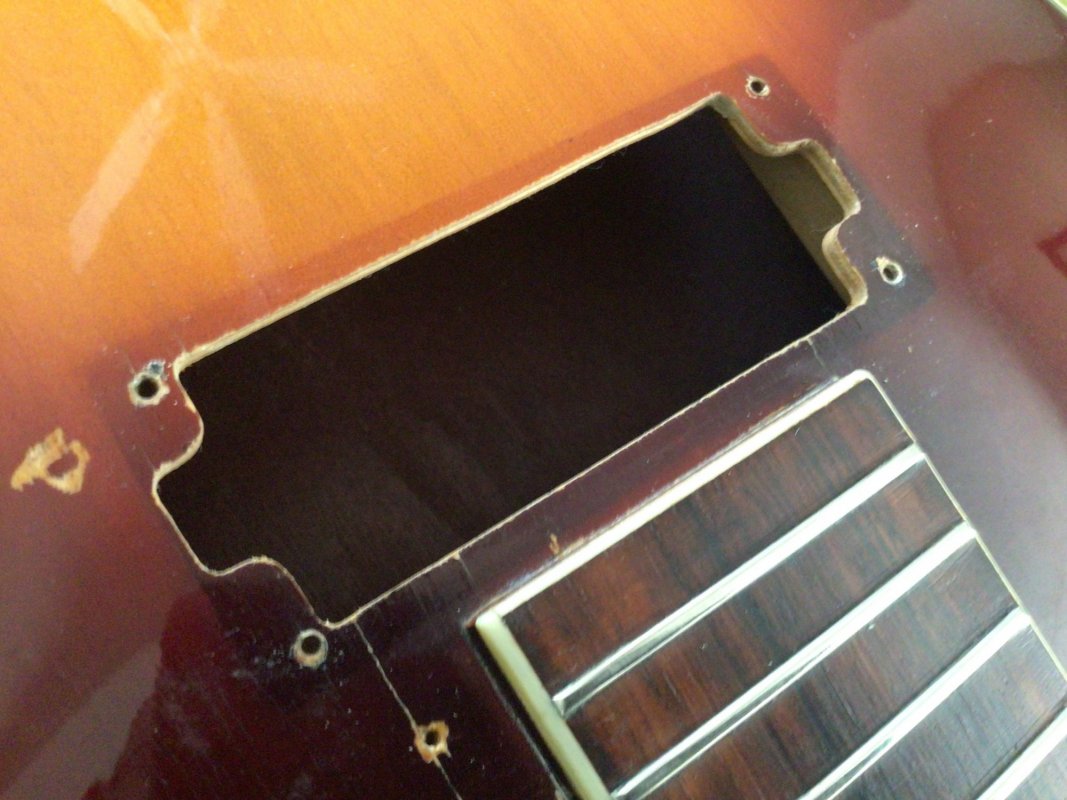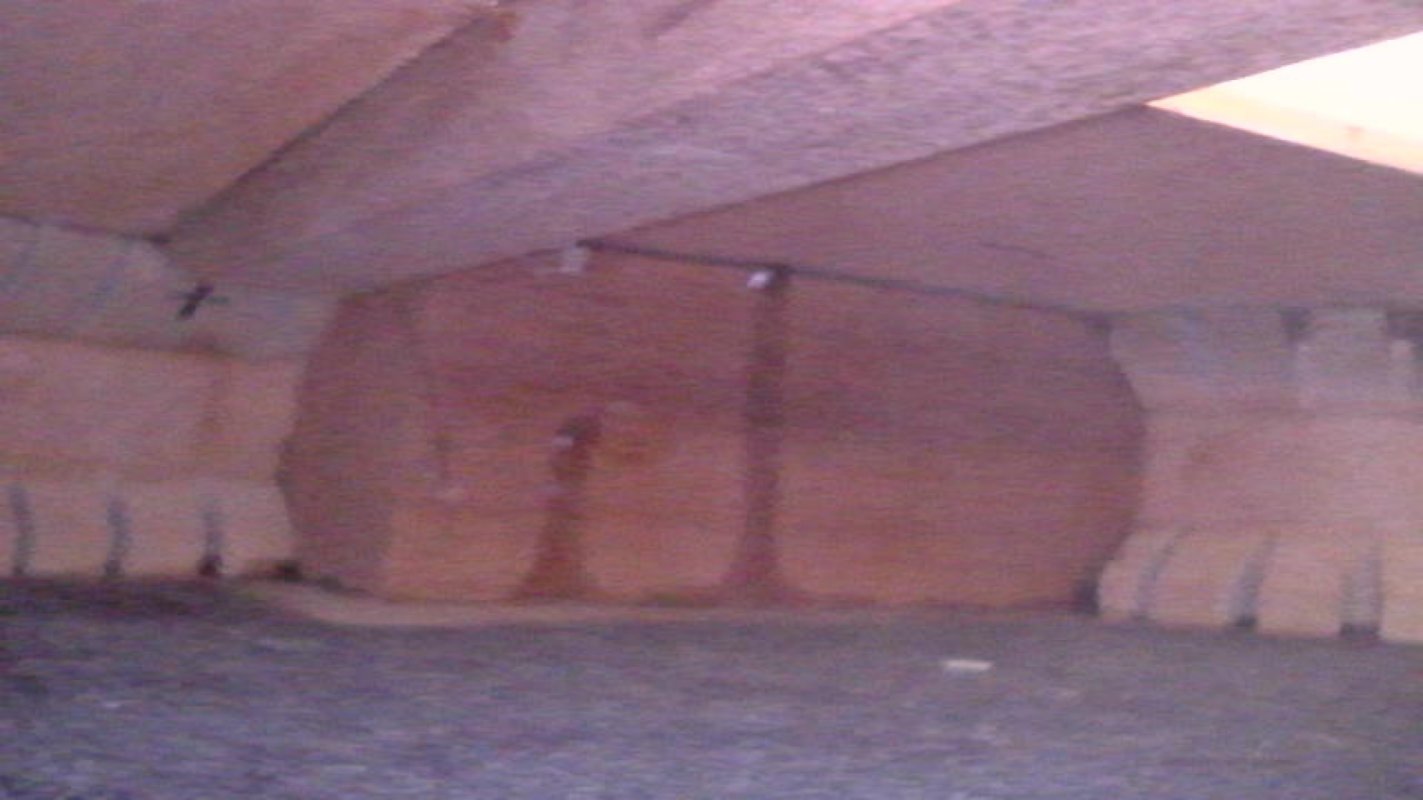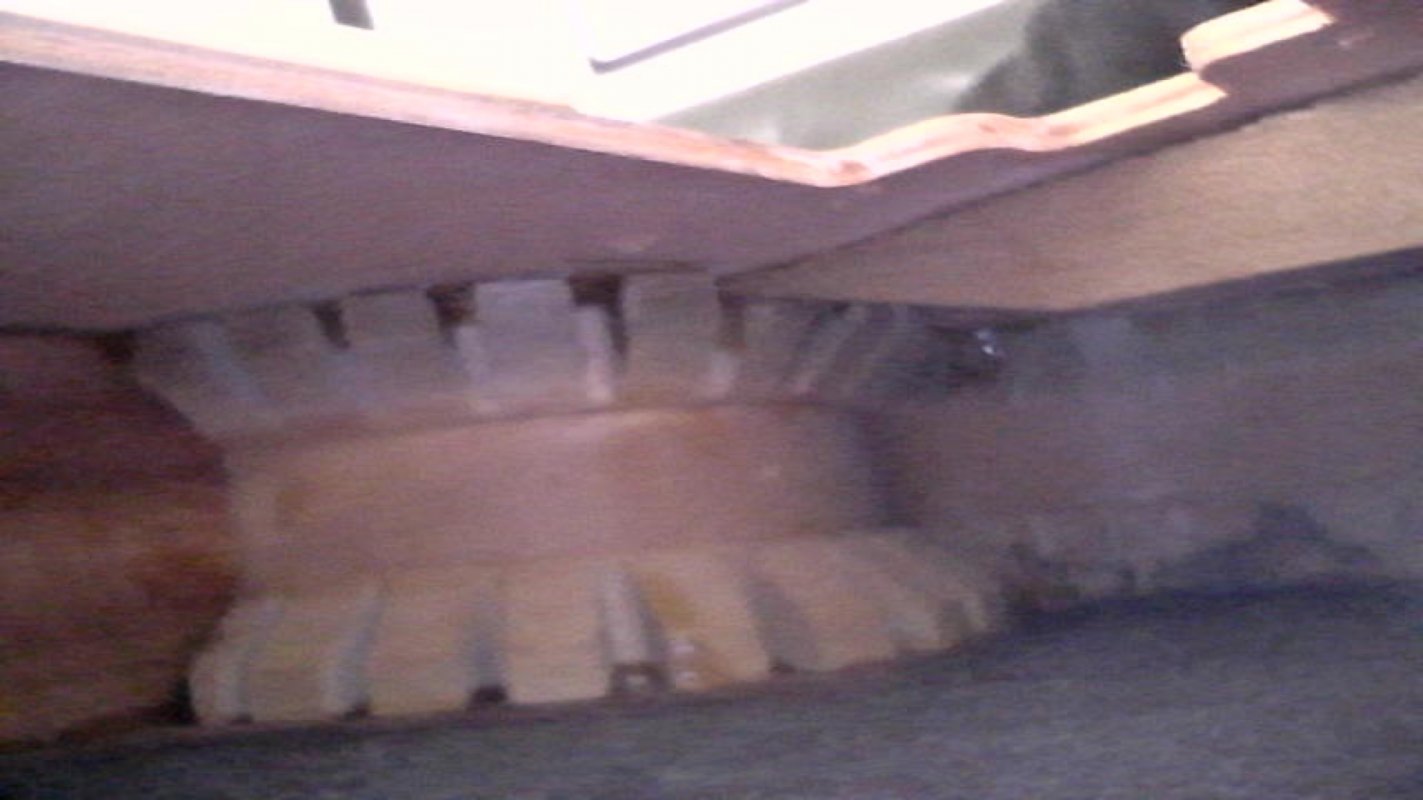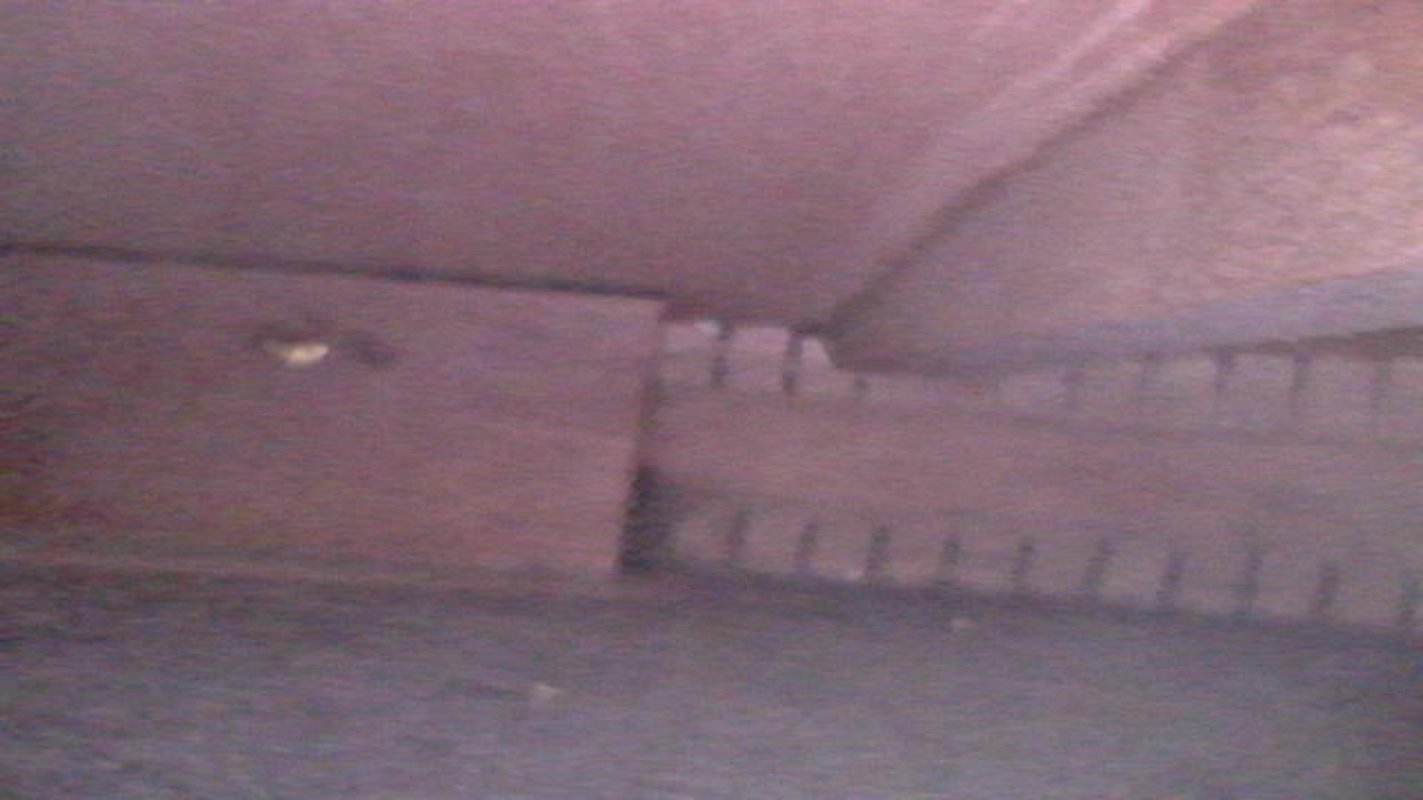- Joined
- Sep 16, 2022
- Messages
- 9
- Reaction score
- 0
- Guild Total
- 2
Looking to spend 2023 building a vintage version of the Aristocrat. However, to do that, one must understand details of how it was originally built (thank goodness for groups like this). I got the structure of kerfed sides, solid carved spruce with parallel support for top and pickups...but...
In Hans encyclopedia of early Guild, he references "the way the neck is attached to the body..." the M-75 used a different floating bridge and required pickups be mounted in the body instead of on.
Leads me to my two questions:
Q: What type of neck joint is used in the original M-75?
Q: What is the neck angle (assumed shallow by the unique bridge and inside-mount pickups)?
Q: What is the carve profile of the top? Some photos make it appear as a rounder slope (which I like) to the sides rather than a Les Paul type of obvious contours.

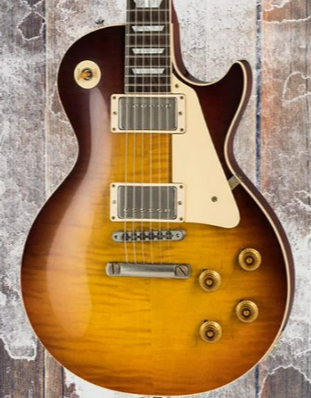
Then I see modern versions (as above on the left, I admit) with more neck visible at the joint and a very flat looking carve contour (if any):
New Ebay Listing -

Same listing

Vintage neck structure:
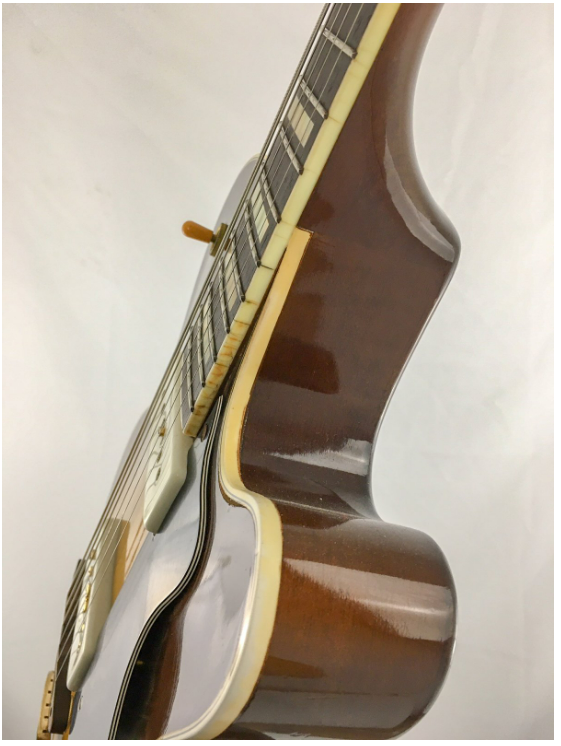
Building for my son, a jazz performer who's into the Julian Lage style and textures...
In Hans encyclopedia of early Guild, he references "the way the neck is attached to the body..." the M-75 used a different floating bridge and required pickups be mounted in the body instead of on.
Leads me to my two questions:
Q: What type of neck joint is used in the original M-75?
Q: What is the neck angle (assumed shallow by the unique bridge and inside-mount pickups)?
Q: What is the carve profile of the top? Some photos make it appear as a rounder slope (which I like) to the sides rather than a Les Paul type of obvious contours.


Then I see modern versions (as above on the left, I admit) with more neck visible at the joint and a very flat looking carve contour (if any):
New Ebay Listing -

Same listing

Vintage neck structure:

Building for my son, a jazz performer who's into the Julian Lage style and textures...
